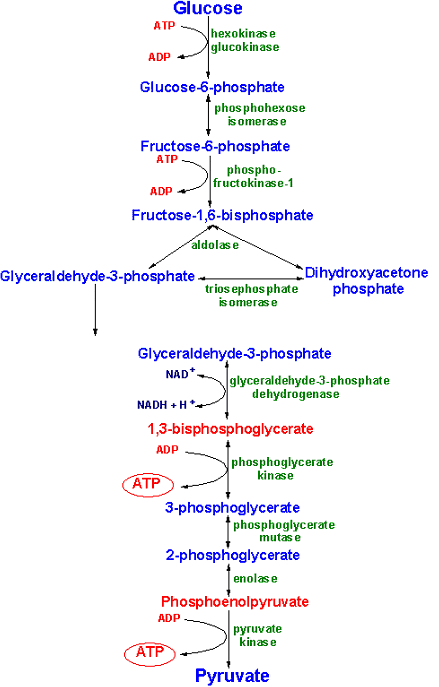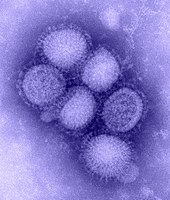Thursday, December 20, 2012
Frog-In-Bucket-Of-Milk Folklore Leads to Potential New Antibiotics
New Dinosaur: First Freshwater Mosasaur Discovered
Muscle-Loss Study Sheds New Light On Ways to Prevent Muscle Loss, Obesity and Diabetes
The Diamond Planet
The core of 55 Cancri e might be made of iron, just like the Earth's; but the outer layers could be a mixture of carbon, silicates, and silicon carbide. The the very high pressure inside the planet, and maybe on the surface, much of the carbon could be diamond. In fact, diamond could account for up to one-third of the planet's weight.
http://www.sciencenewsforkids.org/2012/11/a-diamond-planet/
Black Piranha
The black piranha can be found all over the Amazon Basin. It is also the most widely spread piranha in South America. Suprisingly, the black piranha and the extinct, giant piranha (megapiranha) have the most powerful bites of all carnivorous fish. The piranha's specialized jaw morphology allows them to attack and bite chunks out of larger prey. The piranha has a relatively small size, but its aggressive nature and accessible population make it a worthy predator. Diet studies indicate that piranhas will attack and bite chunks of bony fins and flesh from prey many times larger than themselves.
The black piranha is able to bite with a force more than 30 times greater than its weight. The bight is achieved by the large muscle mass of the black piranha's jaw and the efficient transmission of its large contractile forces through a highly modified jaw-closing lever.
The bite force of the extinct, giant piranha, was reconstructed and discovered to be stronger than other extinct mega-redators, including the whale-eating shark.
http://www.sciencedaily.com/releases/2012/12/121220160727.htm
http://www.aquascapeonline.com/aquatic-live-stock-fresh-water-fish-piranhas-genus-serrasalmus-black-piranha-guyana/
Unusual Venomous Animals
The Komodo dragon is almost no surprise that it is poisonous. You may have seen its powerful bites and tremendous speed. Overall, the animal is dangerous. However, its most dangerous feature is what lies within its already powerful bite. The dragon has six poison glands on each side of its mouth. They don't have any grooved fangs, but instead they have sawlike teeth. When the prey pull away, the dragon pulls back. This allows venom to ooze into the wound.
The Komodo dragon may not come as a surprise, but the hooded pitohuis should. In 2009, John Dumbacher an ornithologist at California Academy of Sciences in San Francisco, picked up the bird. When he did it made him sneeze and itch and his eyes began to water. A predator who eats the bird suffers a worse consequence. High levels of batrachotoxin are found in pitohui muscle, heart and liver. This is the same found in poison dart frogs. The toxin interrupts the normal function of a predators nerve cells, eventually causing the heart to stop beating.
http://www.sciencenewsforkids.org/2012/03/cant-touch-this-unusual-venomous-creatures/
Protein Deficiency
There's Something In The Water
Muscle Fatigue

 |
| This is a model of what happens in a short term process of muscle fatigue. |
H1N1: Swine Flu
Mashing Mantis Shrimp
Immortal Palm Trees
Blind Mole Rat's Ability to Fight Cancer
Vera Gorbunova and her colleagues took cells from the blind mole rats and put them in a culture that would force them to multiply beyond what would happen within the animals’ bodies. Beyond twenty multiplications, cells started to rapidly die off. The cells release a chemical called interferon-beta, which the immune system uses normally to fight viruses. In blind mole rats, the chemical caused blind mole rate cells to "burst" open, a process known as necrosis. Once the blind mole rats' cells detected multiplication beyond a cetain point, they kill themselves. Now, researchers are trying to figure out why necrosis is able to kill tumor cells without damaging healthy tissues. Living in low oxygen environments definitly benefit blind mole rat's ability to fight cancer.
http://www.wired.com/wiredscience/2012/11/blind-mole-rat-cancer/
http://www.sciencenews.org/view/generic/id/346267/description/Cancer_cells_self-destruct_in_blind_mole_rats
Scientists Develop Way To Prevent Inherited Diseases
Are Bacteria Making You Hungry?
Punching Power
Cleaning Clams
New Freshwater Dolphin Like Dinosaur Discovered
Bacteria Vs. Viruses!
Liquid Metal Wires
http://www.sciencedaily.com/releases/2012/12/121218121421.htm
Wednesday, December 19, 2012
Oldest Stars
http://www.sciencenewsforkids.org/2012/11/twinkle-twinkle-oldest-stars/
Zinc may help treat jellyfish stings
Second Earth?
For more click http://news.sciencemag.org/sciencenow/2012/12/another-earth-just-12-light-year.html
First Rock From the Sun has Ice

Campylobacter jejuni
Pigs in Southern China infected with Avian Flu!
Researchers reported for the first time the seroprevalence of three strains of avian influenza viruses in pigs in southern China, but not the H5N1. The influenza A virus is responsible for annual outbreaks as well as pandemics that have killed millions of people world wide. In an article published in the Journal of Clinical Microbiology, researchers have proved pigs can be infected with both human and avian influenza virus. They believe pigs act as a "mixing vessel" for genetic reassortment that could lead to pandemics. Pigs have been infected experimentally by all avian H1-H13 subtypes, however natural transmission to pigs has been rare, until now. In a study, from 2010-2012, Guihong Zhang and colleagues of the College of Veterinary Medicine, South China Agricultural University, Guangzhou, People's Republic of China test 1080 pigs ages 21-25 weeks. The tested them for all subtypes of the Avian influenza virus including H3, H4, H5, and H6, and also H1, and H3 subtypes of swine influenza virus. Of the pigs tested 35% tested positive for H1N1, and 20% tested positive for H3N2. A study in 2001 resulted in no samples being positive for any of the Influenza virus. These researchers strongly suggest that the pork industry worldwide, test for the influenza virus in their pigs.
http://www.sciencedaily.com/releases/2012/12/121219174158.htm
3-D structural image
First 3-D Images Obtained Of Core Component Of Molecular Machinery Used For Cell Reproduction
For the first time, structural biologists have managed to obtain the detailed three-dimensional structure of one of the proteins that form the core of the complex molecular machine, called the replisome, that plant and animal cells assemble to copy their DNA as the first step in cell reproduction.
Currently, the process of DNA replication in eukaryote cells is a "black box." Biologists know what goes in and what comes out but they know very little about how the process actual works at the molecular level. Because form causes function in the protein world, determining the 3D structure of the 30-40 proteins that combine to form the replisome is a necessary first step to figuring out the details of this critical process and understanding how it can go wrong.

My opinion is that we need to continue to build our knowledge database so that we may learn what is truly happening inside and around us. By doing so we will not only better ourselves, but also the enviroment in which we live.
Smoking Hurts Teen Girls Bones
Lorah Dorn, a developmental psychologist and pediatric nurse practitioner at Cincinnati Children's Hospital Medical Center, recruited 262 healthy girls ages 11 to 17. Each of the girls answered questions about their health habits and would return three times a year for bone density tests. Girls who regularly reported smoking regularly had shown nearly flat rates of bone density growth. Non smokers showed normal growth of the bones.
click here for more info
Will Biodiversity remain?
http://www.globalissues.org/issue/169/biodiversity
Dust of Twin Tower Linked to Cancers
Other people exposed to the dust have so far experienced no increased risk. The study was based off of the approximately 55,000 New York residents exposed to the dust after the towers fell. It is unclear why three of the cancers were caused and the other twenty were left alone; but any cancer rate increase raises the concern that exposures during the rescue and months-long cleanup operation may pose future risks, Stellman says, an epidemiologist at the New York City Department of Health and Columbia University.
People who worked amid the dust include first responders, cleanup crews, welders who cut up the tangled steel beams and barge and landfill workers who removed the rubble. By 2007 and 2008, this group of people showed a slightly increased risk of prostate cancer, a doubled risk of thyroid cancer and a nearly tripled risk of multiple myeloma when compared with the general population of New York.
Tuesday, December 18, 2012
Giant Star Flying Through Space
http://www.jpl.nasa.gov/news/news.php?release=2011-026

Friday, December 14, 2012
How old is cheese?
ICE AGE WOLVES
Countering Brain Chemical Could Prevent Suicides
"There's been a lot of focus on another neurotransmitter called serotonin for about 40 years now. The conclusion from our paper is that we need to turn some of that focus to glutamate." said Brundin. In the meantime anti-glutamate drugs are still in development. Soon, this could offer a key too preventing suicide in the future. An anesthetic called ketamine inhibits glutamate signaling, but it's side effects keep its from being used today. Brundin also says inflammation in the brain is primary in showing that suicidal behavior may be triggered. This inflammation comes from a buildup of quinolinic acid buildup in patients spines in a study that perfromed. It is important they continue and eventually finalize their experiments so we can help society with this problem. Glutamate research linked to suicide
 |
| The purple arrows represent where glutamate pathways are located. |
Thursday, December 13, 2012
Bad Pork
Some of the bacteria samples were resistant to antibiotics used to treat people. This is beacuase of the frequent low dose of antibiotics used in the raising of pigs. Of the 132 samples of Yersinia, 121 were resistant to one class of antibiotic, and 52 were resistant to two or more. Of the 19 samples containing Enterococcus, 12 were resistant to at least one class. Of the 14 samples positive for staph, 13 were resistant to at least one class, and 9 were resistant to two or more. Lastly, of the 8 samples consisting of salmonella, 6 were resitant to at least one class, and 3 were resistant to at least 5 types.
A second test was done on a seperate, 240 samples of pork. The controversial drug, Ractopamine, which encourages lean muscle growth, was found in 20% of the samples. It is legal in the U.S, but banned in the European Union, China, and Taiwan. Therefore, those countries do not accept meats containing Ractopamine.
Rep. Louise Slaughter (D-NY), the member of Congress has been the strongest voice for controlling antibiotic resistant bacteria in food. She stated, " I have legislation awaiting a vote in Congress to address this problem once and for all — and it’s time we pass it into law".
http://www.consumerreports.org/cro/pork0113.htm
http://www.wired.com/wiredscience/2012/11/bad-pork-cu/#more-139025



























